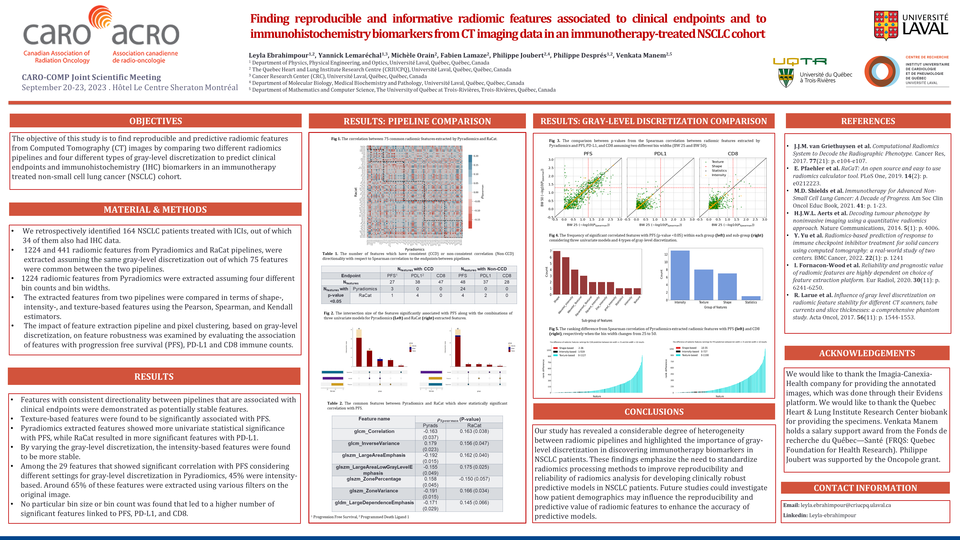Abstract
- Purpose
The objective of this study is to find reproducible and predictive radiomic features from Computed Tomography (CT) images that are correlated to clinical endpoints and immunohistochemistry (IHC) biomarkers in an immunotherapy treated non-small cell lung cancer (NSCLC) cohort.
- Materials and Methods
A retrospective study of NSCLC patients receiving immunotherapy was undertaken. The dataset includes 164 patients that have CT-scans and survival end points, while 34 of them have IHC data as well. For all of the patients, we extracted 1224 and 441 radiomics features using two IBSI-compliant pipelines, Pyradiomics and RaCat respectively. They were grouped into shape-, intensity-, and textural-based categories. The intraclass comparison between features across these two pipelines was assessed by the Pearson, Spearman, F-test, and Mutual Information estimators and corrected for false positives using the False Discovery Rate (FDR) method. To assess the influence of the clustering of pixels based on their intensity (defined as the gray-level discretization), on the robustness of features, we computed their association with two survival endpoints (Overall Survival (OS) and Progression Free Survival (PFS)) and with eight IHC markers (CD3, CD4, CD8, CD56, CD163, Lag3, PD1, and TIM) considering two different bin counts and bin width for a sub-group of 34 Samples.
- Results
Our results showed that first-order radiomic features were amongst the most reproducible features. Importantly, our findings conveyed that while the values of radiomic features were strongly pipeline-dependent, the textural radiomic features that were associated to the clinical parameters and IHC markers were strongly dependent to the type of discretization too. When changing the bin width or bin count, only 20% of the overall texture-based radiomic features have a lower rank differential change (less than 50) in the target prediction ranking score. Whereas, this value is 100% for the shape-based features and 90% for the intensity-based features.
- Conclusions
Through this work, we highlighted a significant heterogeneity between radiomic pipelines as well as the impact of gray-level discretization on the discovery of immunotherapy biomarkers in NSCLC patients. Based on this, it is crucial to standardize the radiomics processing methods to develop clinically robust predictive models in future studies.





